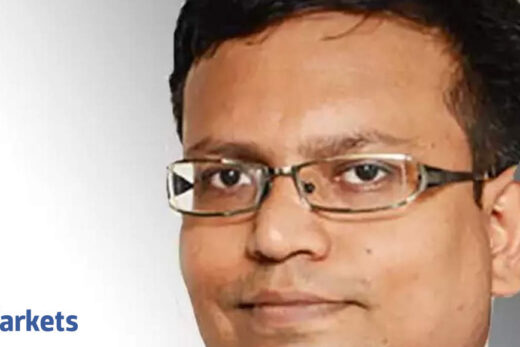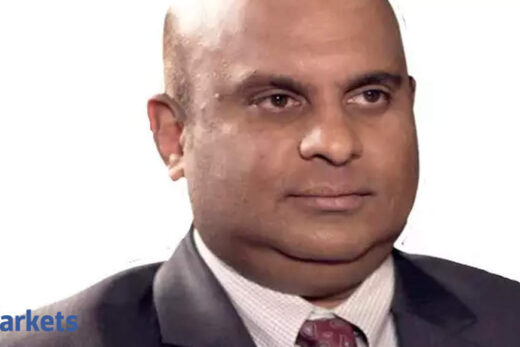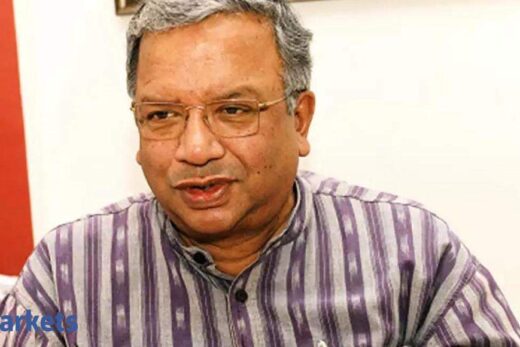You are saying that growth has a downward risk and inflation has an upward risk. It might be range-bound right now but it exists. So if you have to summarise your world economic outlook what would that be? Should we be cautious?
Global recovery is continuing and that is the good news. But the momentum has certainly weakened and that has been a consequence of the Delta variant and the supply disruptions that it has led to. All of that has lasted longer than was expected. So, we have a small downgrade for the world as a whole. It is a small downgrade. It is just a 0.1 percentage point downgrade. But I think it is important to keep in mind that the pandemic is not over. There have been supply disruptions with semiconductor chips and because of that, not being able to produce enough cars. We are seeing shortages in stores because of the delivery lags and shipping. We are seeing energy prices going up in many parts of the world and that is affecting inflation. All of these posed headwinds for the recovery.
In India and even globally, we have seen that the supply side disruptions are actually causing a sort of slowdown as far as the recovery process is concerned. Do you see the lag effect of supply side disruption continuing well into 2022?
It varies depending upon the sectors. For instance, if you look at the current steep rise in gas prices which has spilled over into oil prices and into coal prices, we expect the effect to subside in the first half of next year, once we get past the winter. Now if the winter turns out to be much more severe than we expected, then the lasting negative effect of that could be longer but the assumption for now is that by the first half of next year, we would be in a better place with semiconductor chips. It takes longer for production to come on line. It is a slower process. So it goes into more of next year.
And again we are seeing this, obviously nobody expected to see this kind of disruption at this time of the year in energy prices. It has been like a perfect storm of events. Overall, the fact that there is elevated risks in the global economy compared to two-three months ago, is what I would flag and the fact that policy making is becoming much more complicated because on one hand, we do not have a full recovery in the economy at the same time we have to deal with high inflation and that complicates how support is provided to the economy.
The US Fed has also indicated that the inflationary pressures are at play and at some point, they will have to look at tapering but otherwise in developed economies and in economies like China, they need to achieve that fine balance between sustaining the recovery or fuelling the recovery and controlling higher prices. We have seen what is happening in China due to the energy supply disruption and emission concerns. How do you see the central bankers balancing that part?
Central bankers will clearly have to tailor their policies to their country specific circumstances. Since you mentioned China, it is a country where we are not seeing much in terms of inflationary forces. If you especially look at core inflation, it is below their central bank’s target. So, I do not think that is an issue. In the US on the other hand, there are these inflationary pressures. We have seen it strongly in the headline inflation numbers and because of this continuous increase in gas prices and fuel prices, that is feeding headline inflation.
The question is whether that goes into core inflation. The expectation is that while there is a transitory effect, we are not going to expect to see a persistent effect on the inflation numbers even in the US.
Somewhere, by the second half of next year, they should come back to much more normal ranges. But this is tricky as the central banks are not supposed to respond to energy prices going up but they do respond to a more generalised inflation that shows up in core inflation. As of now, the expectation is that the Fed will only raise interest rates sometime towards the second half of next year at the earliest or late next year, but that could change if there is any surprise on the inflation front and that has consequences not just for the US but also for the rest of the world.
There is a firmly placed recovery which is happening. It might be uneven as the outlook mentions but it is firmly in place and the worst is behind us in terms of global economic outlook and the engines of growth.
Everything about this crisis and the recovery has depended on the dynamics of the pandemic and I unfortunately do not think that we are completely out of the woods over here. But there are several experts who do believe that the worst may be behind us when it comes to the pandemic. We are getting to much higher levels of vaccination in different parts of the world. There is also the immunity that people have got from being infected from Covid and that could provide protection.
Countries like India should stay completely focussed on the goal of getting to higher levels of vaccination coverage which they can certainly do and also making sure that the parts of the world which have almost no vaccine access, many countries in Africa unfortunately are in that situation, get the vaccines that they need.
Are you surprised with the pace of vaccination in India because it did start slowly and there were supply issues but lately it has really gathered steam and Indians are getting vaccinated actually at a breakneck speed?
I think this is excellent. Indeed it was slow in the beginning but it helps that India has Serum Institute of India which has the manufacturing capacity to produce a large number of vaccines which India is keeping to itself and is being able to vaccinate a large number of its population. It is an excellent outcome that at this point, 50% of the population has gotten at least one dose of the vaccine and it continues to go up. There is a good supply there but also you need to make sure that vaccine hesitancy does not become a problem over time which is becoming a problem in many parts of the world. But that is again another area where you need to make sure that people take the vaccine. But India is on a very good trajectory.
This could have been one of the factors why the growth outlook for India has remained unchanged at least in the latest reports?
Yes indeed, absolutely. The reason that we have the growth numbers that we do is because of the very healthy pace of vaccination and as that continues, we expect it to be able to sustain the recovery and get people back into even greater normalcy in terms of spending behaviour and investment behaviour. So indeed that has been an important factor.
The government is also getting its act together like the whole privatisations process of Air India. It has finally been pushed through. There are many other reforms which are in the pipeline or are ongoing as we speak. What is your take on this privatisation and the reforms thrust that the Indian government is focussed on?
The privatisation of Air India is highly welcome. It has been a very long time since the Indian government privatised anything. The fact that they did this also signals a very strong commitment to their privatisation agenda. It is extremely welcome and a very good step. The plan is to use the money that is raised also for a more targeted public infrastructure spending and that is very beneficial to the economy. What we have to keep in mind though is as India recovers, that there is still a distance to travel. If you look at employment numbers, if you look at the output gaps, there is that distance to be travelled yet you need to be able to bring back consumption growth on a more stronger footing, investment on a stronger footing and that will take some time. But you have to keep your eye on those aspects of the recovery too.
You are looking at maybe the normalisation of the pace of growth and hence the 8.5% kind of number that you have indicated for India next year. What are the threats in terms of you revising your forecast for India next year?
The risks are in the near term, there is some downside to shortages on the coal front. The fact that oil prices have gone up sharply. The fact that core inflation in India is still very sticky at a high level. These are downside risks in the near term. In addition to the fact that like every other country in the world, we have the virus that can come up with a new variant and create problems again. So those would be all downside risks.
On the upside, of course, is that if there is further smooth exit from the pandemic and if we see the consumer sentiment getting stronger, business investment getting stronger, demand coming back up and more capacity utilisation which then leads to higher investment — that would signal much stronger recovery, much less scaring then we have currently in our projections. But one thing that requires attention is the need for continued investment in the health sector and also for education because we have seen that there has been a big hit to education in the last 18 months or so. That also has to be addressed.
What is your take on China, I mean we all know there are some power plants which they had to shut down, there are some factories which are currently offline and off the whole supply grid and obviously the ongoing tensions that they are constantly triggering with Taiwan, with India and even their overall approach in South East Asia. Is that a cause of concern?
In the case of China, we have a very slight downgrade to its growth this year which has come because fiscal policy tightened somewhat stronger than we expected. In terms of the risks, there are risks from the property sector. And the property sector is a big part of China’s economy and the government has been regulating that sector which has led to some of the events that we have seen. The regulation is necessary. Do not get me wrong that it is important to do that.
But we have seen the stress that is caused in terms of the impact on Evergrande which is the largest property developer. So the question from the world’s perspective is how does this affect China’s growth overall because when China’s growth falls significantly, it has a big impact on the world. Our expectation is that because the government has the tools and it has a policy space, it should be able to ring fence the problem. There will be some effects on the property sector which will slow growth, but on the other hand, we do not expect to see it spreading more widely to other sectors in China and having substantial negative consequences for the world.
Do you believe that they are going a little overboard when it comes to regulation because suddenly they are so alert about everything that can be regulated — it could be virtual currency, it could be real estate, it could be even the time kids play on a gaming device. Everything is getting regulated. Are they going slightly ahead of the curve there?
The specifics of what they are regulating clearly matters. I have different opinions about regulating Bitcoin versus something else. I would say that China, like every other country at this point, has to make sure that they have the anti-trust policies working, which is that big monopolies are not being created due to lack of competition. So there is that one piece to it. And the second also is to ensure data privacy. We are seeing companies collect a whole amount of private data and how it is used is very important. But again in terms of regulation, the best policy is predictability. One knows what the regulations are, well in advance so one can comply with transparency. We do think that it applies to China, it applies to every country in the world and one need to have those kinds of predictable, stable regulatory policies. The industry is changing but that kind of predictability will make sure that this is not very costly to the economy.
We have seen that Indian equity markets are to some extent behaving as if they are decoupled from global concerns or global sentiment. We have also seen a booming consumption recovery, boom in IPO market and valuations going sky high. In terms of valuations, would you be concerned and I am asking you as an economist not necessarily the IMF view?
We are economists at the IMF. What we are seeing in India is very similar to what we are seeing in other parts of the world., which is that the equity markets are quite buoyant and it helps that interest rates are very low in all parts of the world even now. Whatever said and done, large companies have rebounded very quickly from this crisis. The problem, of course, is with the MSMEs where India has seen bigger problems. There is weakness in their recovery and that can have an effect on the financial sector’s balance sheet because of non-performing loans.
I do believe that there is that concern there because we still have not exited the pandemic mindset yet. We are not at the point where we stop talking and looking around the landscape and seeing everything that needs to be fixed. So there is certainly that risk that once we get to that point which will be good in terms of dealing with the pandemic, we still have to think about the increase in non-performing loans that will quite likely occur. What that implies in terms of capitalisation for the banking sector, how to revive the MSME sector are important challenges for the country.
How comfortable are you about the macro indicators or the high frequency indicators or data points of the US economy?
If you look at the US economy’s recovery, it was back to pre-pandemic level in the second quarter of this year and it has projected to exceed the pre-pandemic projected level where it would have been in the absence of the pandemic either end of this year or early next year. So it is on a very strong recovery path.
The problem is that the risks are elevated. Inflation is a concern and you have seen that in terms of inflation readings over these last several months. Some of that was perfectly expected because inflation was way too low last year and it is rebounding and so some of that comes back. But the fact that supply disruptions have lasted very long, the problem that though you have taken out extra unemployment insurance is still the case that you are not seemingly back fully. These are important issues that still need to be addressed. But overall, our projection for the US this year is 6% growth and then 5.2% next year. These are the very strong growth numbers.
Two factors which are in favour of India right now and two factors which could pose a threat to the Indian economy and the slightly longer term India story at this point in your sense.
One positive is that vaccination scenario, the fact that India has gotten 50% of its (4:15) whole population receive at least one shot and that continues in terms of getting more and more vaccinated, I think that makes India stand out also in terms of developing countries, I think that is a big positive. Second positive I would say is there is a mix of things. I just keeping the very near term, I would say the privatisation of Air India for instance is a positive signal of the commitment of the government to pursue this agenda I think that is a positive and more generally Diwali is a good time for consumer sentiment that comes back, the resilience that comes with it. In terms of the risks I would say the near term the energy problems could be an important risk in terms of coal and oil prices. The second part of it would be the fact that the recovery is still very uneven with the problems that I mentioned about medium, small and micro enterprises still being weak; employment still being below where it should be with still a big gap there; more people being pushed into poverty. So I think this unequal recovery will also have to be addressed.



